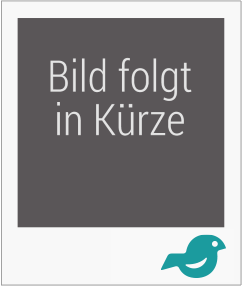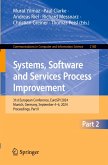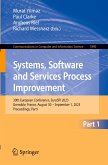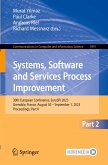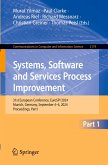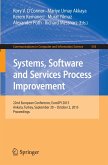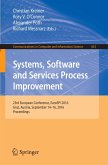Systems, Software and Services Process Improvement
32nd European Conference, EuroSPI 2025, Riga, Latvia, September 17-19, 2025, Proceedings, Part I
Herausgegeben:Yilmaz, Murat; Clarke, Paul; Riel, Andreas; Messnarz, Richard; Zelmenis, Mikus; Buce, Ivi Anna
Systems, Software and Services Process Improvement
32nd European Conference, EuroSPI 2025, Riga, Latvia, September 17-19, 2025, Proceedings, Part I
Herausgegeben:Yilmaz, Murat; Clarke, Paul; Riel, Andreas; Messnarz, Richard; Zelmenis, Mikus; Buce, Ivi Anna
- Broschiertes Buch
- Merkliste
- Auf die Merkliste
- Bewerten Bewerten
- Teilen
- Produkt teilen
- Produkterinnerung
- Produkterinnerung
The two-volume set CCIS 2657 + 2658 constitutes the refereed proceedings of the 32nd European Conference on Systems, Software and Services Process Improvement, EuroSPI 2025, held in Riga, Latvia, during September 17-19, 2025.
The 42 papers included in these proceedings were carefully reviewed and selected from 72 submissions. They were organized in topical sections as follows: Part I: SPI and Emerging and Multidisciplinary Approaches to Software Engineering; SPI and Standards and Safety and Security Norms; SPI and Functional Safety and Cybersecurity.
Part II: Sustainability and Life…mehr
Andere Kunden interessierten sich auch für
![Systems, Software and Services Process Improvement Systems, Software and Services Process Improvement]() Systems, Software and Services Process Improvement68,99 €
Systems, Software and Services Process Improvement68,99 €![Systems, Software and Services Process Improvement Systems, Software and Services Process Improvement]() Systems, Software and Services Process Improvement65,99 €
Systems, Software and Services Process Improvement65,99 €![Systems, Software and Services Process Improvement Systems, Software and Services Process Improvement]() Systems, Software and Services Process Improvement68,99 €
Systems, Software and Services Process Improvement68,99 €![Systems, Software and Services Process Improvement Systems, Software and Services Process Improvement]() Systems, Software and Services Process Improvement57,99 €
Systems, Software and Services Process Improvement57,99 €![Systems, Software and Services Process Improvement Systems, Software and Services Process Improvement]() Systems, Software and Services Process Improvement65,99 €
Systems, Software and Services Process Improvement65,99 €![Systems, Software and Services Process Improvement Systems, Software and Services Process Improvement]() Systems, Software and Services Process Improvement38,99 €
Systems, Software and Services Process Improvement38,99 €![Systems, Software and Services Process Improvement Systems, Software and Services Process Improvement]() Systems, Software and Services Process Improvement38,99 €
Systems, Software and Services Process Improvement38,99 €-
-
-
The two-volume set CCIS 2657 + 2658 constitutes the refereed proceedings of the 32nd European Conference on Systems, Software and Services Process Improvement, EuroSPI 2025, held in Riga, Latvia, during September 17-19, 2025.
The 42 papers included in these proceedings were carefully reviewed and selected from 72 submissions. They were organized in topical sections as follows:
Part I: SPI and Emerging and Multidisciplinary Approaches to Software Engineering; SPI and Standards and Safety and Security Norms; SPI and Functional Safety and Cybersecurity.
Part II: Sustainability and Life Cycle Challenges; SPI and Recent Innovations; Digitalisation of Industry, Infrastructure and E-Mobility; SPI and Agile.
The 42 papers included in these proceedings were carefully reviewed and selected from 72 submissions. They were organized in topical sections as follows:
Part I: SPI and Emerging and Multidisciplinary Approaches to Software Engineering; SPI and Standards and Safety and Security Norms; SPI and Functional Safety and Cybersecurity.
Part II: Sustainability and Life Cycle Challenges; SPI and Recent Innovations; Digitalisation of Industry, Infrastructure and E-Mobility; SPI and Agile.
Produktdetails
- Produktdetails
- Communications in Computer and Information Science 2657
- Verlag: Springer / Springer Nature Switzerland / Springer, Berlin
- Artikelnr. des Verlages: 89578752, 978-3-032-04287-3
- Seitenzahl: 480
- Erscheinungstermin: 22. August 2025
- Englisch
- Abmessung: 235mm x 155mm x 26mm
- Gewicht: 721g
- ISBN-13: 9783032042873
- ISBN-10: 3032042879
- Artikelnr.: 74997799
- Herstellerkennzeichnung
- Springer-Verlag GmbH
- Tiergartenstr. 17
- 69121 Heidelberg
- ProductSafety@springernature.com
- Communications in Computer and Information Science 2657
- Verlag: Springer / Springer Nature Switzerland / Springer, Berlin
- Artikelnr. des Verlages: 89578752, 978-3-032-04287-3
- Seitenzahl: 480
- Erscheinungstermin: 22. August 2025
- Englisch
- Abmessung: 235mm x 155mm x 26mm
- Gewicht: 721g
- ISBN-13: 9783032042873
- ISBN-10: 3032042879
- Artikelnr.: 74997799
- Herstellerkennzeichnung
- Springer-Verlag GmbH
- Tiergartenstr. 17
- 69121 Heidelberg
- ProductSafety@springernature.com
.- SPI and Emerging and Multidisciplinary Approaches to Software Engineering
.- Generative IT Products be generic to become generative to handle fit for use.
.- Explainable AI for SW Development and Testing.
.- Baseline Evaluation of LLM-Facilitated UI Test-Case Generation from Gherkin Specifications.
.- Hype to Quality: Assessing Generative AI Products Before Use.
.- Trustworthy Artificial Intelligence in Healthcare: a proposed framework.
.- Current AI-based Software Engineering, Strengths and weaknesses - Results from a MLR.
.- Toward the implementation of DevOps: a guide of tools, practices and activities.
.- Inner source, outer source, low code, and no code: Pros, Cons and Contexts - Results from an MLR.
.- Benchmarking AI-Facilitated UI Test-Script Generation: A Reproducible Evaluation Framework.
.- A Review of Estimation in Software Engineering.
.- Programming language selection in software engineering: Results from an adapted MLR focused on Go, Haskell, Python and Rust.
.- SPI and Standards and Safety and Security Norms.
.- A Process Assessment Model for AI-enabled Medical Device Software.
.- Advancing Risk Management Processes for Automotive Machine Learning Applications: Optimizing A-SPICE® v4.0 with ISO23894 for Safe and Reliable Deployment.
.- Automatic assessment of corporate sustainability due diligence process capability and CS3D compliance.
.- Regulatory Compliance-aware System Change Management via an Ontology-based Approach.
.- Electromechanic for Development of Embedded Systems.
.- Strengthen Process Debt Identification through Process Assessment Standards.
.- A Review of AI Life Cycle-related Standards to Address AI-enabled Medical Device Development.
.- Interpretations of Automotive SPICE Generic Practices on Level 2.
.- Evaluation of IEC 61508 Defenses for Common Cause Failures in Railway Industry.
.- Interfaces between Quality Assurance and ASPICE Assessment and Improvement.
.- SPI and Functional Safety and Cybersecurity.
.- Cybersecurity vulnerabilities management for small and medium enterprises.
.- Security and safety interrelationships in the V2X context A brief comparison of typical techniques and requirements of standards.
.- Efficiency boosters for the successful execution of functional safety.
.- Enhancing Automotive TARA: The Role of Attacker Motivation in Attack Feasibility Levels.
.- Multi-Layer non-project-based TARA.
.- Updated Experiences with Using ASPICE 4.0 for Safety Audits and Interfacing Safety Assessments.
.- Generative IT Products be generic to become generative to handle fit for use.
.- Explainable AI for SW Development and Testing.
.- Baseline Evaluation of LLM-Facilitated UI Test-Case Generation from Gherkin Specifications.
.- Hype to Quality: Assessing Generative AI Products Before Use.
.- Trustworthy Artificial Intelligence in Healthcare: a proposed framework.
.- Current AI-based Software Engineering, Strengths and weaknesses - Results from a MLR.
.- Toward the implementation of DevOps: a guide of tools, practices and activities.
.- Inner source, outer source, low code, and no code: Pros, Cons and Contexts - Results from an MLR.
.- Benchmarking AI-Facilitated UI Test-Script Generation: A Reproducible Evaluation Framework.
.- A Review of Estimation in Software Engineering.
.- Programming language selection in software engineering: Results from an adapted MLR focused on Go, Haskell, Python and Rust.
.- SPI and Standards and Safety and Security Norms.
.- A Process Assessment Model for AI-enabled Medical Device Software.
.- Advancing Risk Management Processes for Automotive Machine Learning Applications: Optimizing A-SPICE® v4.0 with ISO23894 for Safe and Reliable Deployment.
.- Automatic assessment of corporate sustainability due diligence process capability and CS3D compliance.
.- Regulatory Compliance-aware System Change Management via an Ontology-based Approach.
.- Electromechanic for Development of Embedded Systems.
.- Strengthen Process Debt Identification through Process Assessment Standards.
.- A Review of AI Life Cycle-related Standards to Address AI-enabled Medical Device Development.
.- Interpretations of Automotive SPICE Generic Practices on Level 2.
.- Evaluation of IEC 61508 Defenses for Common Cause Failures in Railway Industry.
.- Interfaces between Quality Assurance and ASPICE Assessment and Improvement.
.- SPI and Functional Safety and Cybersecurity.
.- Cybersecurity vulnerabilities management for small and medium enterprises.
.- Security and safety interrelationships in the V2X context A brief comparison of typical techniques and requirements of standards.
.- Efficiency boosters for the successful execution of functional safety.
.- Enhancing Automotive TARA: The Role of Attacker Motivation in Attack Feasibility Levels.
.- Multi-Layer non-project-based TARA.
.- Updated Experiences with Using ASPICE 4.0 for Safety Audits and Interfacing Safety Assessments.
.- SPI and Emerging and Multidisciplinary Approaches to Software Engineering
.- Generative IT Products be generic to become generative to handle fit for use.
.- Explainable AI for SW Development and Testing.
.- Baseline Evaluation of LLM-Facilitated UI Test-Case Generation from Gherkin Specifications.
.- Hype to Quality: Assessing Generative AI Products Before Use.
.- Trustworthy Artificial Intelligence in Healthcare: a proposed framework.
.- Current AI-based Software Engineering, Strengths and weaknesses - Results from a MLR.
.- Toward the implementation of DevOps: a guide of tools, practices and activities.
.- Inner source, outer source, low code, and no code: Pros, Cons and Contexts - Results from an MLR.
.- Benchmarking AI-Facilitated UI Test-Script Generation: A Reproducible Evaluation Framework.
.- A Review of Estimation in Software Engineering.
.- Programming language selection in software engineering: Results from an adapted MLR focused on Go, Haskell, Python and Rust.
.- SPI and Standards and Safety and Security Norms.
.- A Process Assessment Model for AI-enabled Medical Device Software.
.- Advancing Risk Management Processes for Automotive Machine Learning Applications: Optimizing A-SPICE® v4.0 with ISO23894 for Safe and Reliable Deployment.
.- Automatic assessment of corporate sustainability due diligence process capability and CS3D compliance.
.- Regulatory Compliance-aware System Change Management via an Ontology-based Approach.
.- Electromechanic for Development of Embedded Systems.
.- Strengthen Process Debt Identification through Process Assessment Standards.
.- A Review of AI Life Cycle-related Standards to Address AI-enabled Medical Device Development.
.- Interpretations of Automotive SPICE Generic Practices on Level 2.
.- Evaluation of IEC 61508 Defenses for Common Cause Failures in Railway Industry.
.- Interfaces between Quality Assurance and ASPICE Assessment and Improvement.
.- SPI and Functional Safety and Cybersecurity.
.- Cybersecurity vulnerabilities management for small and medium enterprises.
.- Security and safety interrelationships in the V2X context A brief comparison of typical techniques and requirements of standards.
.- Efficiency boosters for the successful execution of functional safety.
.- Enhancing Automotive TARA: The Role of Attacker Motivation in Attack Feasibility Levels.
.- Multi-Layer non-project-based TARA.
.- Updated Experiences with Using ASPICE 4.0 for Safety Audits and Interfacing Safety Assessments.
.- Generative IT Products be generic to become generative to handle fit for use.
.- Explainable AI for SW Development and Testing.
.- Baseline Evaluation of LLM-Facilitated UI Test-Case Generation from Gherkin Specifications.
.- Hype to Quality: Assessing Generative AI Products Before Use.
.- Trustworthy Artificial Intelligence in Healthcare: a proposed framework.
.- Current AI-based Software Engineering, Strengths and weaknesses - Results from a MLR.
.- Toward the implementation of DevOps: a guide of tools, practices and activities.
.- Inner source, outer source, low code, and no code: Pros, Cons and Contexts - Results from an MLR.
.- Benchmarking AI-Facilitated UI Test-Script Generation: A Reproducible Evaluation Framework.
.- A Review of Estimation in Software Engineering.
.- Programming language selection in software engineering: Results from an adapted MLR focused on Go, Haskell, Python and Rust.
.- SPI and Standards and Safety and Security Norms.
.- A Process Assessment Model for AI-enabled Medical Device Software.
.- Advancing Risk Management Processes for Automotive Machine Learning Applications: Optimizing A-SPICE® v4.0 with ISO23894 for Safe and Reliable Deployment.
.- Automatic assessment of corporate sustainability due diligence process capability and CS3D compliance.
.- Regulatory Compliance-aware System Change Management via an Ontology-based Approach.
.- Electromechanic for Development of Embedded Systems.
.- Strengthen Process Debt Identification through Process Assessment Standards.
.- A Review of AI Life Cycle-related Standards to Address AI-enabled Medical Device Development.
.- Interpretations of Automotive SPICE Generic Practices on Level 2.
.- Evaluation of IEC 61508 Defenses for Common Cause Failures in Railway Industry.
.- Interfaces between Quality Assurance and ASPICE Assessment and Improvement.
.- SPI and Functional Safety and Cybersecurity.
.- Cybersecurity vulnerabilities management for small and medium enterprises.
.- Security and safety interrelationships in the V2X context A brief comparison of typical techniques and requirements of standards.
.- Efficiency boosters for the successful execution of functional safety.
.- Enhancing Automotive TARA: The Role of Attacker Motivation in Attack Feasibility Levels.
.- Multi-Layer non-project-based TARA.
.- Updated Experiences with Using ASPICE 4.0 for Safety Audits and Interfacing Safety Assessments.

